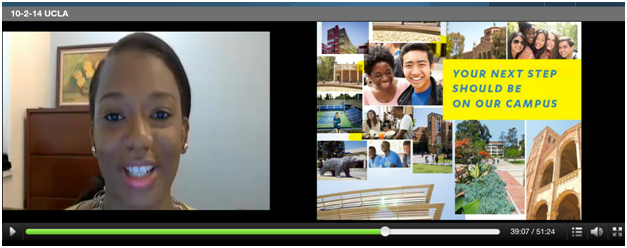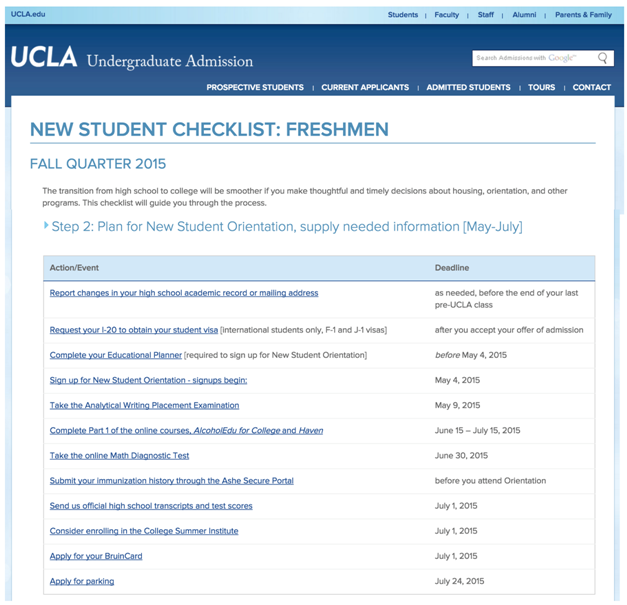May 1 has come and gone, and institutions are busy analyzing lists of accepted students and counting their deposits. Increasingly, however, they are finding that deposits do not equal enrollments. Whether they are negotiating financial aid offers with more than one college or simply biding their time to put off a tough decision, more students are putting deposits down at multiple institutions, making the task of enrolling the next class that much more challenging.
Theoretically, double deposits can be risky for students. The overwhelming consensus among guidance counselors, institutions, and industry associations like the College Board is that this behavior is unethical and puts the student’s acceptance at risk in addition to forfeiting their deposit—up to $1,000 in some cases. While we were unable to find specific examples of students’ acceptances being withdrawn due to this behavior, many colleges have specific policies that prohibit the accepting offers from multiple institutions.
Even with these clear risks to students, our data shows that “doubling down” is still happening and contributing to the issue of summer melt. Some larger institutions estimate the number of double-deposited students to be as high as 75 students in an enrolling class. Eduventures recommends that colleges take the position that a deposit does not guarantee that a student will enroll. Continued contact with deposited students throughout the summer from admissions, student affairs, and student financial services is the best way to hedge against students who have doubled down with another institution.
Here are three ways to stay in touch with admitted students:
 Figure 1: Screenshot of CollegeWeekLive event hosted by UCLA
Figure 1: Screenshot of CollegeWeekLive event hosted by UCLA
 Figure 2: UCLA Accepted Student Portal and Checklist
Successful completion of any of these activities could be seen as a positive indicator that a student will enroll in the fall. These indicators are only available if the admissions office has access to the data generated by all of the various websites, assessments, and data systems that the student must interact with. Some indicators are very simple to observe and may be collected by the admissions office directly. However, if a student merely signs up for new student orientation activities through your website with no real risk or additional commitment, it should not be seen as a strong indicator of enrollment. Regardless of the type and source of the indicator in question, this data should be shared with your enrollment CRM to ensure that reports and analysis can be run against the data to identify students not likely to complete enrollment at your institution.
Figure 2: UCLA Accepted Student Portal and Checklist
Successful completion of any of these activities could be seen as a positive indicator that a student will enroll in the fall. These indicators are only available if the admissions office has access to the data generated by all of the various websites, assessments, and data systems that the student must interact with. Some indicators are very simple to observe and may be collected by the admissions office directly. However, if a student merely signs up for new student orientation activities through your website with no real risk or additional commitment, it should not be seen as a strong indicator of enrollment. Regardless of the type and source of the indicator in question, this data should be shared with your enrollment CRM to ensure that reports and analysis can be run against the data to identify students not likely to complete enrollment at your institution.
1. Use technology to help you stay engaged.
One way for institutions to stay engaged with students over the summer is to use technology to make admissions staff and other resources available to students online. For example, the events, presentations, and live chats provided by CollegeWeekLive, traditionally a provider of online college fairs, can help your college to create a summer enrollment curriculum of sorts. These tools can provide additional resources to students and help them get through each step on your new student orientation checklist.Students who participate in online meetings with admissions staff and other student services are much more likely to enroll, as well as to complete and submit all required forms on time. Records of student participation in online events should be loaded into your enrollment CRM in order to flag students in need of and follow-up information or engagement from other student services professionals. Figure 1: Screenshot of CollegeWeekLive event hosted by UCLA
Figure 1: Screenshot of CollegeWeekLive event hosted by UCLA
2. Collect data on enrollment activities.
Institutions trying to predict the likelihood of enrollment among accepted students have merged their traditional and online outreach to accepted students with a new student checklist in a holistic accepted student portal. One great example is the portal UCLA Undergraduate Admissions provides its inbound freshmen class. Not only does it provide an electronic method of accepting the admission decision and providing the required paperwork electronically, but the integrated checklist also highlights the required activities and transactions the student must complete prior to enrollment.On the UCLA site, students must complete at least 12 different activities between May 1 and July 24, well in advance of showing up at orientation. These activities include sending test scores and transcripts, registering for orientation, and taking online diagnostic tests to assist in remediation. Figure 2: UCLA Accepted Student Portal and Checklist
Successful completion of any of these activities could be seen as a positive indicator that a student will enroll in the fall. These indicators are only available if the admissions office has access to the data generated by all of the various websites, assessments, and data systems that the student must interact with. Some indicators are very simple to observe and may be collected by the admissions office directly. However, if a student merely signs up for new student orientation activities through your website with no real risk or additional commitment, it should not be seen as a strong indicator of enrollment. Regardless of the type and source of the indicator in question, this data should be shared with your enrollment CRM to ensure that reports and analysis can be run against the data to identify students not likely to complete enrollment at your institution.
Figure 2: UCLA Accepted Student Portal and Checklist
Successful completion of any of these activities could be seen as a positive indicator that a student will enroll in the fall. These indicators are only available if the admissions office has access to the data generated by all of the various websites, assessments, and data systems that the student must interact with. Some indicators are very simple to observe and may be collected by the admissions office directly. However, if a student merely signs up for new student orientation activities through your website with no real risk or additional commitment, it should not be seen as a strong indicator of enrollment. Regardless of the type and source of the indicator in question, this data should be shared with your enrollment CRM to ensure that reports and analysis can be run against the data to identify students not likely to complete enrollment at your institution.

